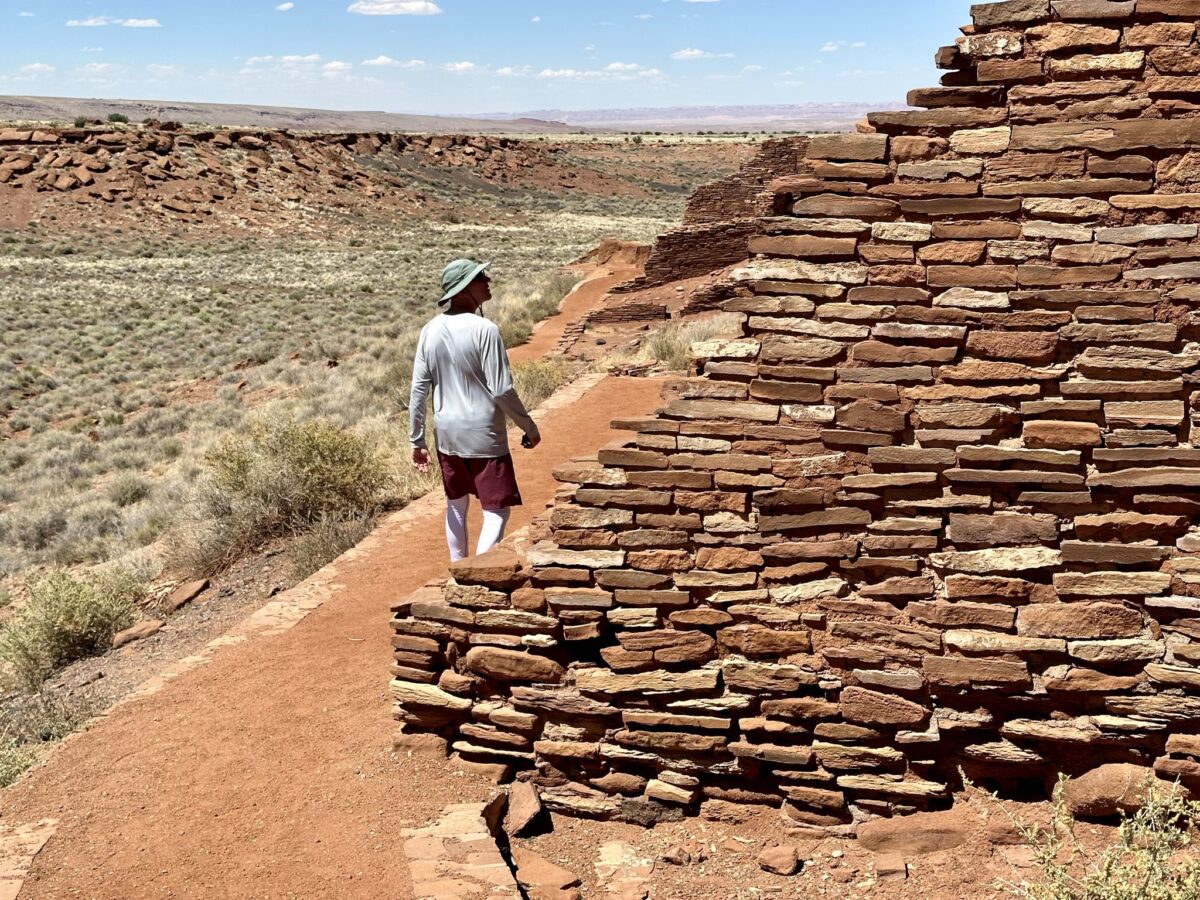On a hot, windy day, we wandered down a short trail to Wukoki Pueblo. It’s one of several pueblo sites you can visit within Wupatki National Monument. We were only an hour from Flagstaff, Arizona, but the old dwelling felt remote.
Two park volunteers told us about the Hopi people who once lived here. “How would you like to stand in a 900-year-old tower?” one asked. We crouched down through tiny doorways — me looking carefully for rattlesnakes — then stood up at the base of a three-story tower, marveling at the people who had built this old structure out of red stones.

Wupatki occupies 56 dry square miles of land on the southwestern Colorado Plateau. It’s connected with Sunset Crater Volcano by a 35-mile loop road, and a single entrance fee gets you into both parks.
Communities occupied the pueblos from about the 1100s. They developed ways to live despite climate extremes and scarce water. Their homes range from one-story, single-family dwellings to complicated high-rises reminiscent of condos. They were built with sandstone slabs, basalt chunks, and limestone blocks set with mortar. Amazingly, the homes are still somewhat intact 700 years after the residents left.

The people lived on a diet of corn, squash, beans, grains, seeds, and fresh meat from hunting. Plants served medicinal, nutritional, and practical purposes. People used rabbitbrush to treat headaches and for green and yellow dyes. Hopis added saltbush wood ash to cornmeal when making bread. This provides niacin, which helps prevent protein deficiency in people who depend heavily on corn. You’ve got to wonder how people figured that one out.
Wupatki became a national monument in 1924, thanks to President Calvin Coolidge. Archeologists still debate many Wupatki topics, including their trading patterns. There’s evidence of interaction with other early people. Homes were built in an Anasazi way but included Sinagua-style textiles, pottery, and tools. A large ball court has intrigued archeologists since the 1930s. What sort of game was played here? And did the game come from the Aztecs or Mayans, who had similar ball courts?

Visitors can explore several different pueblo sites. The Citadel and Nalakihu pueblos are next to the main road. Getting to Wukoki Pueblo requires driving a 2.5-mile spur road. It’s a half-mile trail hike to Lomaki Pueblo. All sites, except Lomaki and Box Canyon Pueblo Trails, are at least partially wheelchair-accessible.
Come prepared. There are no gas stations, restaurants, or overnight accommodations inside the monument. Fill up your water bottles ahead of time. Bonito Campground near Sunset Crater is open from late spring through early fall. It has running water and restrooms but no showers.

